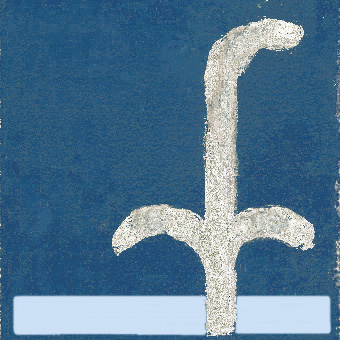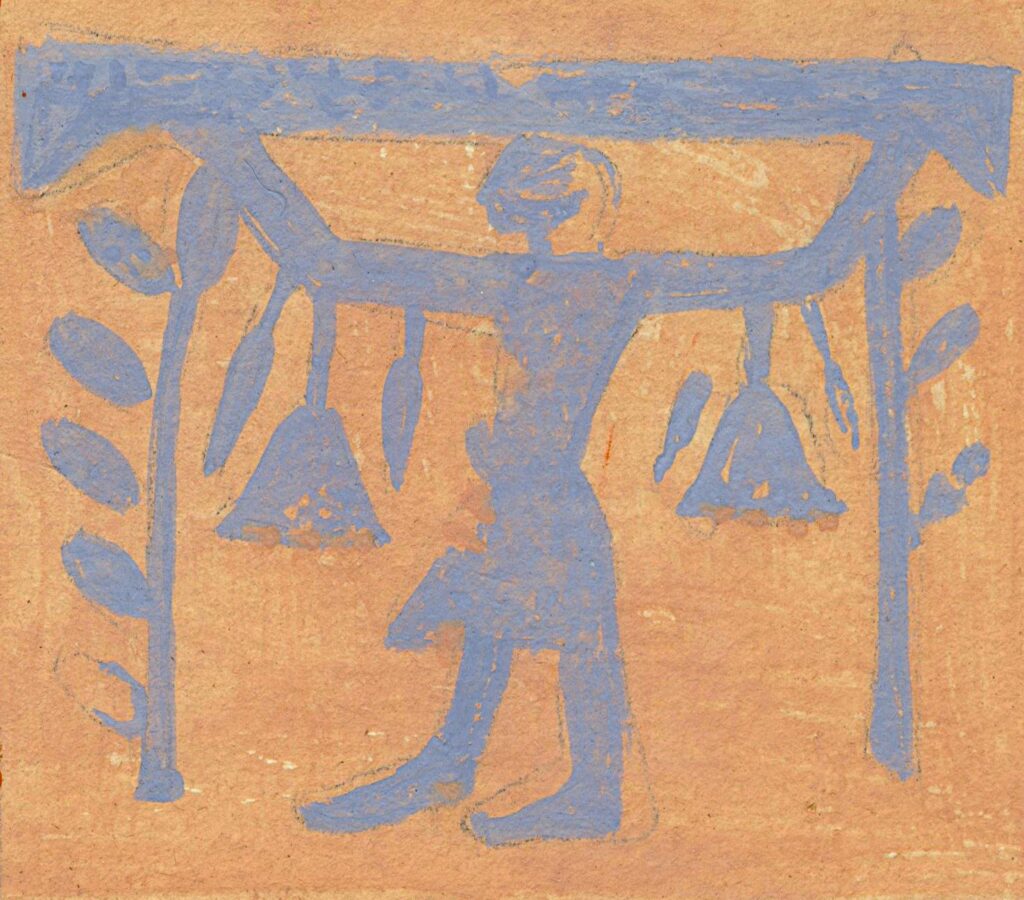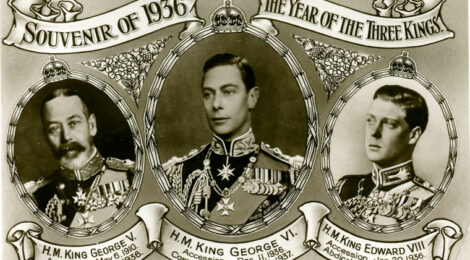
Coronation
Author: Susan Biddle.
This post looks at Myrtle Broome’s experience of the Coronation of King George VI and, earlier, the death of King George V and abdication of King Edward VIII, as well as some of her journey along the Red Sea coast in May 1937.
On 12 May 1937 Myrtle Broome celebrated the coronation of George VI with Amice Calverley at the Zafaran lighthouse on the Red Sea coast. Myrtle and Amice were on their way home at the end of what proved to be their final season working on recording the reliefs at The Temple of King Sethos I at Abydos. They had decided to drive back through Europe rather than taking a boat from Port Said as usual, because they anticipated that they “should have great difficulty to get a ship direct to England as they have all been booked up for the Coronation & there will be a long waiting list of people going home on leave”.
Sixteen months earlier, on 22 January 1936, Myrtle had begun her letter to her mother by saying she and Amice were “both very grieved at the news of the King’s death. We only knew of his illness a day before. I imagine London must be in a state of gloom, in fact all England, as he was so beloved by his people”.

By unknown photographer, bromide postcard print (January 1936)
© National Portrait Gallery, London, NPGx193296
Her reaction had been echoed by Herbert Fairman, excavating at Amarna with John Pendlebury. On 30 January 1936 he wrote to Mary Jonas, secretary of the Egypt Exploration Society, saying: “the king’s death came as a great shock to us all, we had hardly realised that he was seriously ill. We made the whole work stop for a minute’s silence on Tuesday morning, and the men were terribly impressed”.
At the end of 1936 Myrtle and Amice had been “very concerned about the King’s abdication & the events that led up to it”. On 15 December 1936 Myrtle told her parents: “I imagine there must have been a very tense feeling in England. Both Amice & I are very relieved that the nation would not accept a Queen who was not above reproach, but feel very sad that such a scandal should be the cause of England losing such a beloved & able King. The English people in Cairo have felt it keenly”. Edward VIII had announced his abdication in a broadcast on 11 December, and ten days later Mary Jonas wrote to Amice saying: “who would have thought that January 1 1937 would open in the reign of an English sovereign two removes from January 1 1936??”.
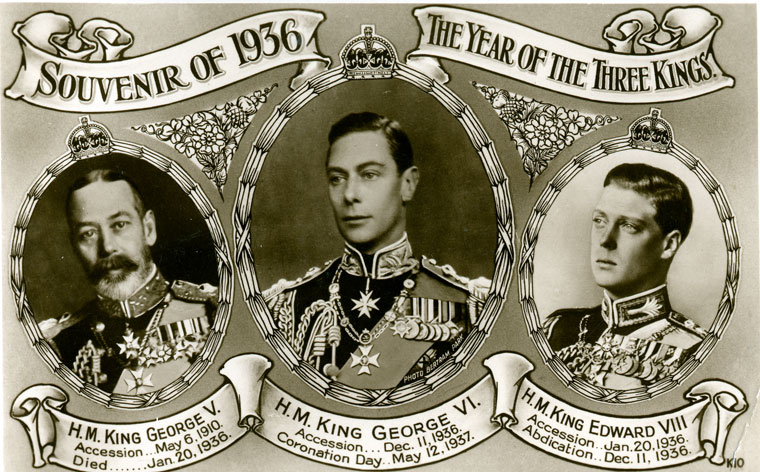
By unknown author, postcard (1936)
Public Domain, via Wikimedia Commons
By March 1937 Myrtle had moved on to happier subjects, thanking her mother for sending her a “Coronation hanky”. Presumably this was an early souvenir of the imminent coronation of George VI on 12 May, rather than one of the commemorative handkerchiefs issued for the abortive coronation of Edward VIII, which had been scheduled for the same date.
Myrtle made no further mention of the coronation until the day itself – there was little opportunity to think about it. By mid-April she and Amice were “working very long hours in the hopes of finishing by May 1 … starting work in the temple by 6.30 am & leaving at 5 pm with only one break of 1½ hours for lunch”. After “four hectic days’ packing” when “we were at it from six in the morning till past eight at night”, they finally left Arabah el-Madfunah in early May. They stayed briefly with their friends M. and Mme. Roche in Sohag, while some repairs were done to their Jowett car “Joey”, and set off across the Eastern Desert for Hurghada on 6 May.
In Hurghada, Amice and Myrtle spent a night with their friends Dr and Mrs Crossland at the marine research station. British professor Cyril Crossland had established this marine biology station, the first of its kind in the Middle East, in 1930 as part of the University of Egypt. They then enjoyed a brief trip to the Roman settlement at Mons Claudianus, where they found “quite a number of the houses are still standing with most walls intact, some even roofed with great stone slabs. There were the baths still with cemented sides & steps leading down & the places for building fires to heat them. There were even niches in some of the walls for statues or busts”. They were escorted by their head servant Sardic and by Hanafey Bey, the inspector of mines whom they had met on an earlier trip to the area and who had “proved to be the most delightful Egyptian we have ever met”.

Myrtle Broome (1937)
Bushey Museum and Art Gallery
The frontier police allowed Amice and Myrtle to travel the 380 km between Hurghada and Suez without an official escort “because Hanafey himself was following us a day & a half later & a government lorry was following him two days later, so if we had had a breakdown or got into trouble, there would have been help coming”. Their route was along “the lonely track that runs between the mountains & the sea … [which] with the exception of two lighthouses is utterly desolate & waterless (except for the sea)”.
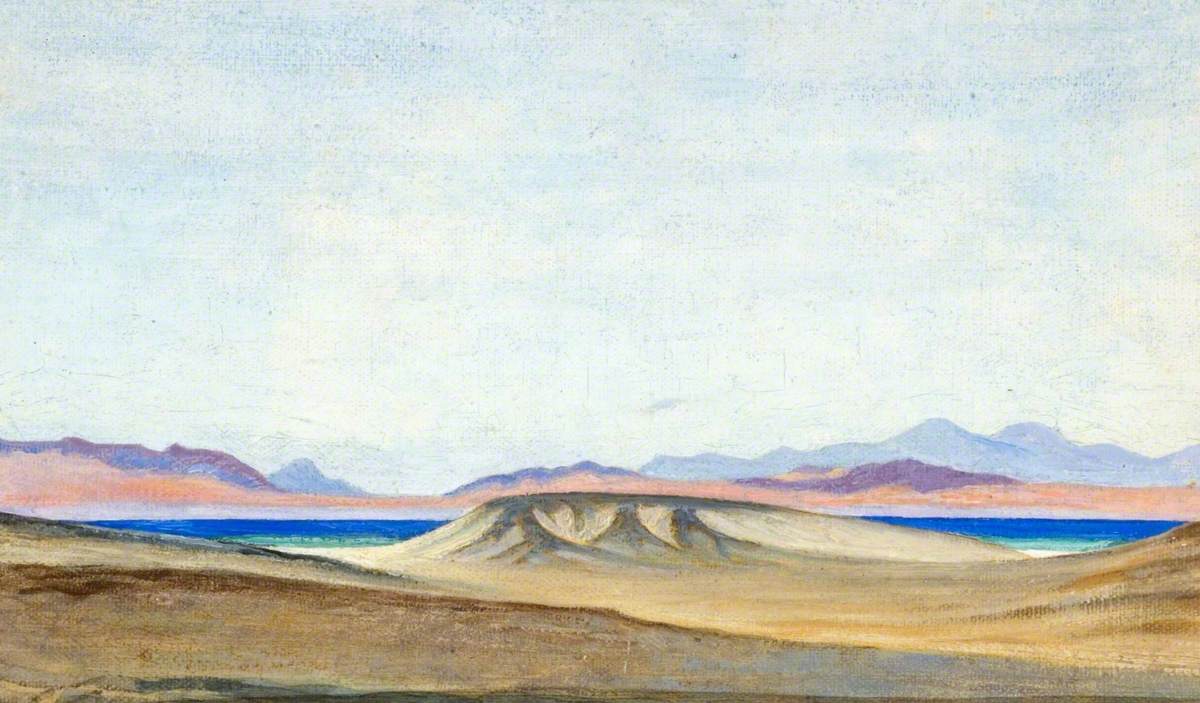
Myrtle Broome (1937?)
Bushey Museum and Art Gallery
They spent one night at the lighthouse at Garib, which had been erected in 1871 by Gustav Eiffel, 18 years before the Eiffel Tower in Paris. This cast iron “tripod” lighthouse was built at the request of Ismail Pasha, Khedive of Egypt, to regulate maritime traffic going to and from the Suez Canal. The two men in charge “were delighted to see us, visitors are a rare treat … They have a really lonely time, their only communication with the world is a boat from Suez once a month”. The men made Amice and Myrtle tea, and they “sat & talked with them until bedtime”.
They left Garib early the following morning and arrived at Zafaran before dark on 12 May “having completed the most dangerous part of the journey without any mishap”. They were wearing their oldest clothes and “had had rather a joke with Hanafey as to whose shirt was in the worst condition”. As they left the Garib lighthouse “Amice decided the shirt she was wearing was no longer decent, so a few miles along the coast we found some flotsam & jetsam which we gathered & made a glorious scarecrow which we set up by the side of the track with one arm pointing the way we had gone & in the other a message written in my best Arabic to convey our greetings to Hanafey when he passed that way”.
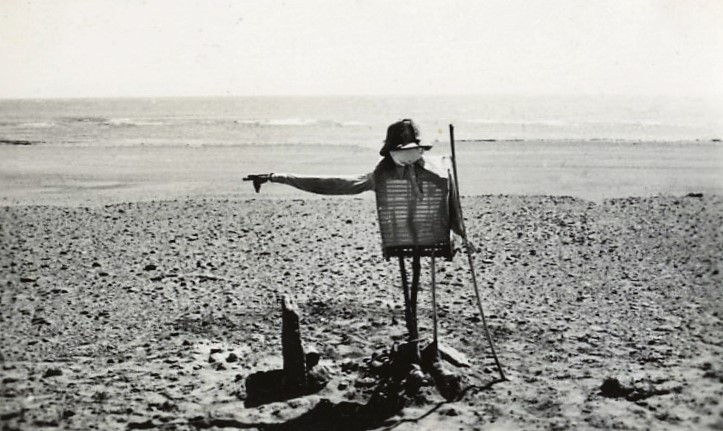
Photograph by Myrtle Broome (1937)
Bushey Museum and Art Gallery
Myrtle told her mother that “Zafaran lighthouse is in communication with Suez & is much larger than Garib. There were three men in charge, also some of the Soudani Camel Corps are stationed there”. They “received a very warm welcome & had a merry tea party with the three men. Then we went up to the top of the lighthouse & saw the light working. You can imagine what a thrill it was to Sardic who had never seen a lighthouse before”.
That evening “was coronation night & [the lighthouse men] had got a radio & we were invited to listen to the King’s speech. Can you imagine the scene? We two English women sitting with the three Egyptians, & a group of camel men all solemnly listening to our own King speaking. When the National Anthem was played of course we stood up & all the others politely followed our example. I can’t tell you how delightfully friendly it all seemed”.
Shortly after the King’s speech Hanafey arrived at Zafaran lighthouse, having completed in about eight hours the journey which had taken Amice and Myrtle two days. He immediately asked them: “‘why didn’t you put the date on the message?’ so we knew he had found our scarecrow [which] had evidently caused him a lot of amusement”. They “had a most uproarious supper together & did not go to bed until past eleven”.
After breakfast at 5.30 am the following morning, Hanafey continued to Suez, while Amice & Myrtle went to the nearby Monastery of St Antonious, taking two of the lighthouse men with them and spending the day with the monks, “who were most hospitable”. They returned to the lighthouse for supper, went to bed early, and departed early the following day, arriving in Suez on Friday night (14 May).
Letters: 366, 388, 401, 405, 408, 409.
With thanks to:
- the Griffith Institute, University of Oxford, for the opportunity to work on the Broome collection, and for their ongoing support for this blog
- the Egypt Exploration Society, for access to their Abydos and Amarna correspondence archives
- the Bushey Museum and Art Gallery, for Myrtle Broome’s paintings of Mons Claudianus and the Gulf of Suez, and her photograph of the scarecrow
- the Artefacts of Excavation project, for biographical details for Herbert Fairman and John Pendlebury, and information on the excavations at Amarna in 1935–1936
- the National Archives, for biographical details for Cyril Crossland
- HistoryHit, for information about Mons Claudianus
- the National Portrait Gallery, London, for the image of King George V’s lying in state
- the Institute for the Study of Ancient Cultures, West Asia & North Africa, University of Chicago and The Ancient World Online, for the links to the four published volumes of The Temple of King Sethos I at Abydos
- Information about the Hurghada marine biology station: Crossland, C. “The Red Sea Biological Station of the University of Egypt”, Nature 134 (1934), 743–744 [https://doi.org/10.1038/134743a0]
- Information about the Garib lighthouse: Egypt Today and Piaton, C., “Les phares d’Égypte : laboratoire et conservatoire de l’ingénierie européenne du XIXe siècle”, ABE Journal 5 (2014) [https://doi.org/10.4000/abe.704]
